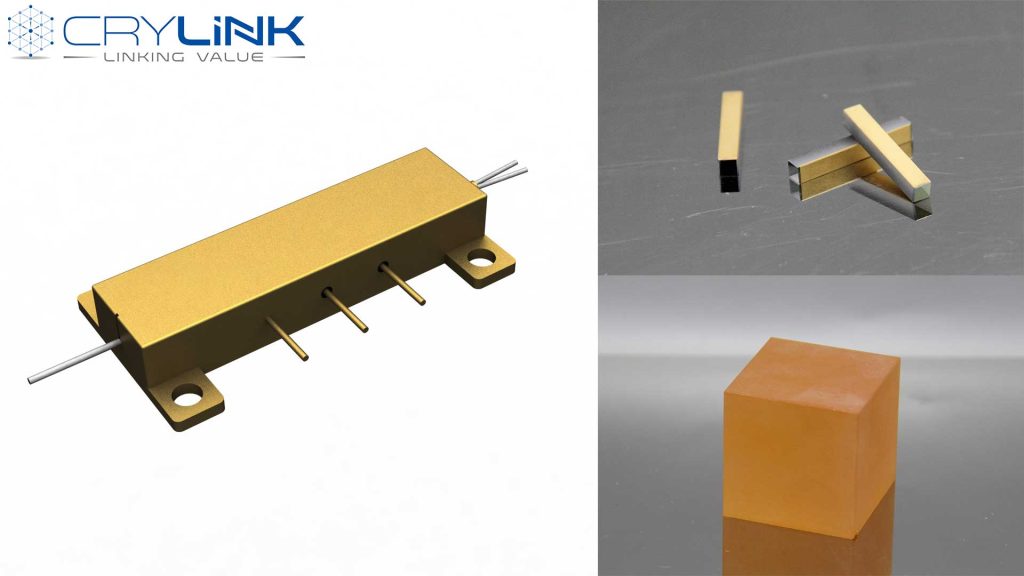Optical modulation
Optical modulation describes changing physical specifications such as amplitude, strength, phase, frequency, also polarization state of light waves to bring details. According to the partnership in between modulation and also source of light, light modulation can be divided into direct together with indirect modulation
Direct modulation
Direct modulation is only suitable for semiconductor lights (LD and also LED) as well as belongs to the power modulation manner. The direct modulation has the advantages of simplicity, economic climate, also easy implementation. It is a modulation technique frequently worked with in fiber optics communication. However, when the laser is straight modulated, its chirp is proportional to the modulation regularity. Under the impact of fiber diffusion, it will certainly cause the transmission range to broaden and also directly impact the transmission distance.
Indirect modulation
Indirect modulation uses the electro-optic, magneto-optic, or acousto-optic impact of the crystal to attain the modulation of laser radiation. This modulation technique appropriates for semiconductors and also other types of lasers. The most frequently taken advantage of indirect modulation is exterior Modulation mode. That is, the modulation signal is packed after the laser is formed. According to their physical system, external modulators can be split into three groups:
- Magneto-optical (Farady) modulator
- Acousto-optic (AO) modulator
- Electro-optic (EO) modulator
Just the latter modulator, the electro-optic modulator, is used in innovative communications because the modulation rate of this modulator is a lot higher than that of various other modulators.
Electro-optic modulation
Applications of the Linear Photoelectric Impact
The linear electro-optic effect has been made use of in the deflection of laser beam of lights, the phase hold-up of light waves, electro-optic discovery, the dimension of electro-optic coefficients, the measurement of high voltage, also so on. Only a relationship function waveform of the real waveform can be obtained taking advantage of the typical photoconductive antenna technology to identify the THz radiation field. This correlation function waveform does not contain the phase details of the THz signal. Nevertheless, the actual waveform of the THz electromagnetic radiation area can be gotten by utilizing electro-optical detection innovation to find the THz electromagnetic radiation area. It has an excellent application possibility in imaging innovation. It is especially crucial that the linear electro-optic impact is put on light modulation, that is, the electro-optic modulator based upon the linear electro-optic effect.
Electro-optic modulator
Electro-optic modulators can modulate the phase, strength, regularity, and also polarization state of light waves also are just one of the essential optical signal modulation ways. As a key device, the electro-optic modulator has been commonly worked with in electro-optic switches, spotting the polarization state of light waves, and so on. An electro-optic switch is a vital system of the laser system, also its switching regularity can get to 120GHz. The solitary pulse can be chosen from the mode-locked series applying the electro-optical switch, also the Q-switched pulse can be clipped. It is also an essential component in the optical isolator. Improving the performance of the electro-optical button can improve the success price also security of the result of a laser system. Sex plays an extremely important role.
Electro-optic effect
The electro-optic impact refers to a phenomenon in which the refractive index of a product changes dramatically under the action of a DC electrical field (or a low-frequency electric area). As early as the eighteenth century, individuals discovered this impact together with split it right into two classifications according to its qualities:
- A single is the supposed linear electro-optic effect or Pockels impact, which can only occur in crystals with spatial noncentrosymmetric;
- The another is the supposed secondary electro-optic or Kerr effect, which can happen in products with spatial centrosymmetry.
In electro-optic modulation, the first form of result is more important.
Electro-optic crystal
Linear electro-optical crystals are generally applied, which can be divided right into the adhering to groups from the point of view of crystal chemistry.
Sort of KDP crystals
Form of KDP crystals: consisting of the KDP and DKDP, ADP, KDA, and so on. The linear electro-optical effect of this type of crystal is fairly considerable, and it is easy to grow large size high optical high quality crystals from liquid option. For that reason, this kind of crystal is one of the most extensively used material among well-known electro-optical crystals It is the only option for big crystals, such as laser-controlled thermonuclear fusion, that are required. The downside is that this water-soluble crystal is very easy to hygroscopy and needs unique security.
ABO3 crystals
ABO3 crystals: A number of these are ferroelectric materials with an oxygen octahedral structure as well as have a large refractive index as well as dielectric continuous. Perovskite crystals are common ABO3 crystals These crystals (such as BaTiO3, SrTiO3, KTaO3, KNbO3, etc) have significant second electro-optic impacts, together with in the ferroelectric stage, they have significant linear electro-optic results. The drawbacks of perovskite crystals are complicated structure, low Curie temperature level, difficulty in growing huge together with consistent crystals, also bad light damages resistance.
AB-type substance crystals
AB-type substance crystals: A lot of are semiconductors and also normally have a relatively huge refractive index. Despite the fact that their electro-optical coefficients are small, n3/Cij is still large. This sort of crystal additionally has a broad transmission band, which plays a vital role in using the infrared band.
Various other miscellaneous crystals
Other miscellaneous crystals: This type of crystal has a wide range, and also its composition, buildings, symmetry, and growth strategies are really different. For instance, hexamethylenetetramine, Td-43m symmetry, can expand in alcohol service; Calcium pyroniobate, symmetrical C2-2, expands at high temperature; ammonium oxalate has a big electro-optic coefficient; gadolinium molybdate is applied as electro-optic The shutter has excellent efficiency; La2Ti2O7 not just has the exact same size of electro-optic impact as LiTaO3. But likewise has great security as well as solid light resistance. However, due to their negative aspects, they are not commonly worked with.
Read more: Classification of Q-switched laser





